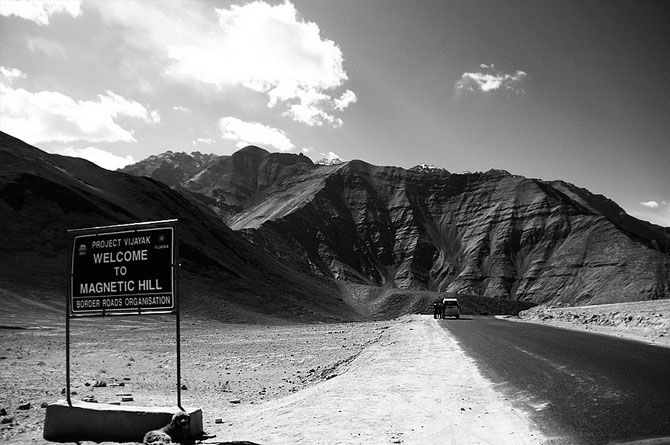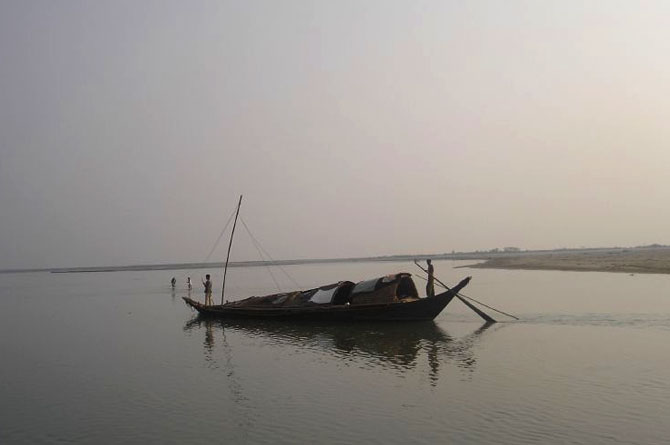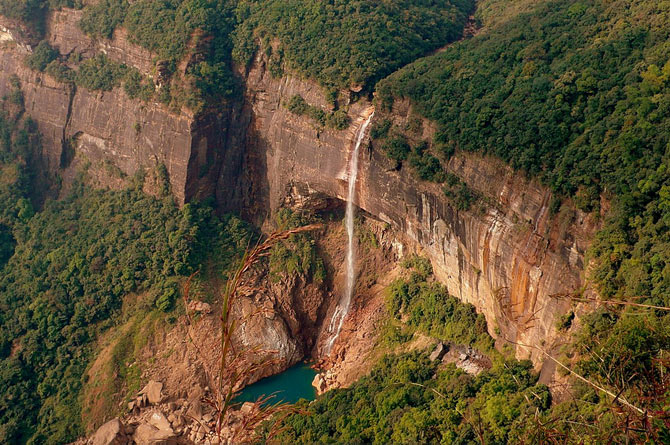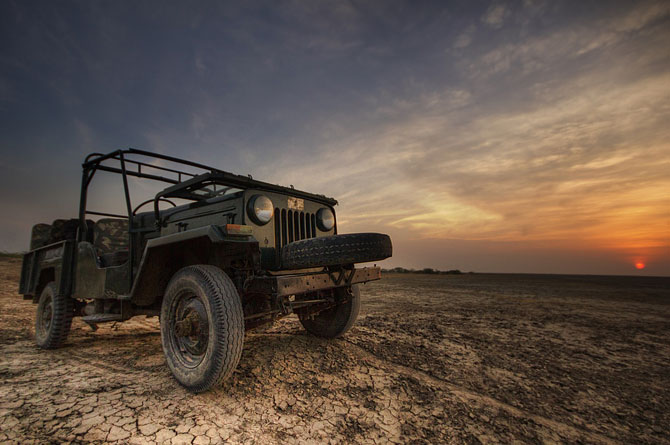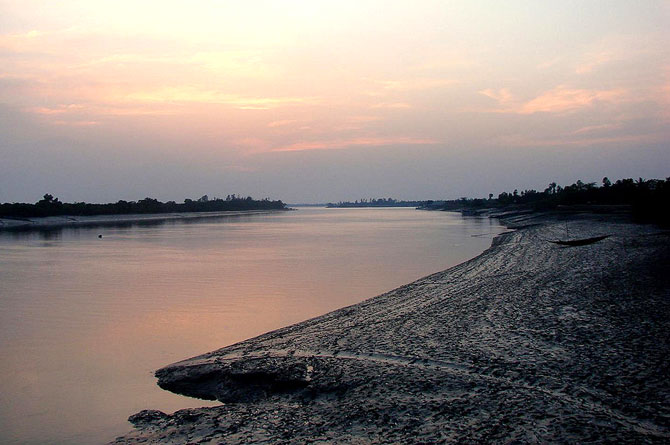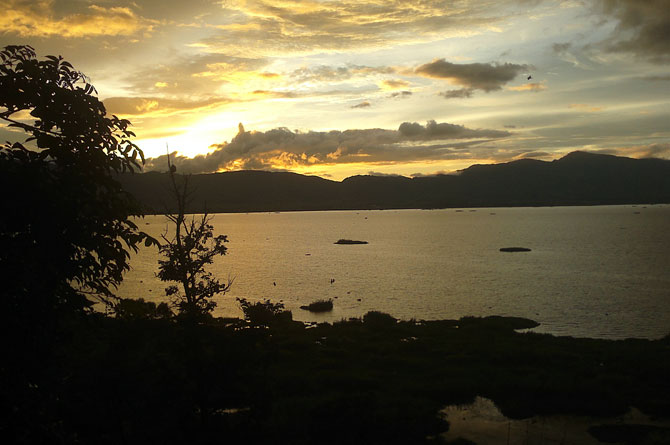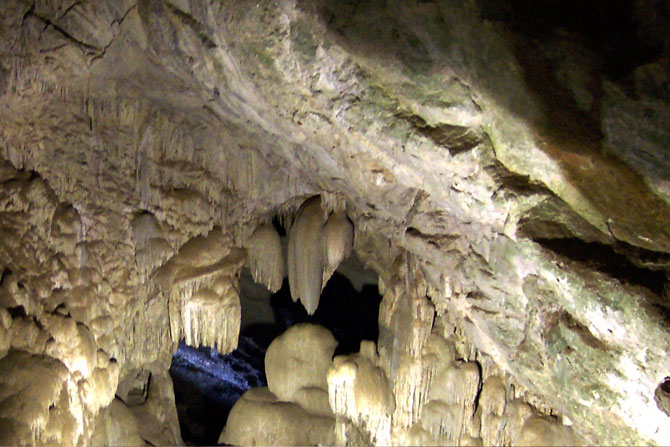 | « Back to article | Print this article |
See before you die: India's most breathtaking natural wonders!
From the Magnetic Hill of Ladakh and the Rann of Kutch in Gujarat and the Lonar Crater Lake in Maharashtra, we list out some of the most amazing natural wonders of our country.
We recently brought you images of some rather unusual wonders of nature from around the world.
In the second edition of our series, we bring you some such phenomena from our very own country.
We start with the Gurudongmar Lake which at first might look like Pangong Tso of Ladakh made popular courtesy 3 Idiots.
The Lake, which is located in Sikkim is one of the highest lakes in the world located at an altitude of 17,100 feet and is but five km from the Sino-Indian border. It is also one of the sources of River Teesta.
On the banks of the lake is a gurudwara to commemorate the visit of Guru Nanak who is said to have struck his walking stick at a place where a tree now stands.
Visit the Gurudongmar Lake; it may be a lesser-known cousin of the pristine Pangong Tso but it is certainly as beautiful and peaceful.
Magnetic Hill, Ladakh
Though there are several around the world, Ladakh's Magnetic Hill is perhaps the only one of its kind in India. Located along the Leh-Kargil-Srinagar national highway, about 30 km from Leh the Hill is said to have magnetic properties that pull cars uphill.
In reality though, the phenomenon is an optical illusion that is a result of the surroundings that makes even a slight downhill slope appear to be uphill. So if you leave a vehicle out of gear, it will seemingly roll uphill.
The local authorities have even put up a board advertising this phenomenon. Visit it to believe it.
Majuli, Assam
Nestling in the lap of River Bramhaputra, Majuli is one of the largest riverine islands in the world and where the 15th century saint Sankardeva, first established a Satra or neo-Vaishnavite monastery.
Eventually the island became home to 65 such satras of which only 22 exist today courtesy the annual floods that have been eroding large parts of the island.
From its size of 1256 sq km as recorded by the Imperial Gazetteer in 1901, the island has been reduced to about 421.65 sq km as of 2001.
Take a walk through the villages on the island where boat making, fishing, pottery and handloom are commonly practiced and soak in the simple pleasures of life.
If ornithology excites you, Majuli is just the place to spot rare and endangered avi-fauna species including the greater adjutant stork, pelican and the whistling teal among others.
Nohkalikai Falls, Meghalaya
Located near Cherrapunji, one of the wettest places on Earth, the Nohkalikai Falls have the tallest plunge in India at over 1100 feet.
The Falls are fed by rainwater that collects on a plateau and thin out between December and February.
Nohkalikai Falls get their name from a local legend involving a young lady called Ka Likai. In the Khasi language, Nohkalikai can be translated as 'Jump of Ka Likai'.
A version of the gory tale goes thus: Ka Likai, a young local remarries. The new husband, jealous of her love for her daughter from the earlier marriage, kills the little one and cooks her flesh into a meal and feeds it to her mother.
In horror and despair, Ka Likai jumps off the cliff thus giving the Falls their name.
Rann of Kutch, Gujarat
Though the Rann of Kutch is a salt marsh in Gujarat, you simply have to visit it to believe just the sheer expanse of the place. The endless land stretching into the horizon is a sight that can be as humbling as that of tall mountains.
The Rann of Kutch is also the last refuge of the Indian wild ass (or Khur) and has been declared the Indian Wild Ass Sanctuary. And even though the landscape looks barren it is far from that.
The Rann of Kutch hosts several migratory birds including ducks, flamingos, pelicans and cranes besides sandgrouses, francolins and the Indian bustards among others. It is also home to the Indian wolf, nilgai and the desert fox.
The Sundarbans, West Bengal
Spread across 140,000 hectares, the Sundarbans is one of the largest mangrove forest in the world.
Located on the delta of three rivers -- Ganga, Meghna and Brahmaputra on the Bay of Bengal -- the Sundarbans are a UNESCO World Heritage Site that are home to over 260 bird species, as well as threatened species of the estuarine crocodile and the Indian python as well as the Bengal Tiger.
Living Root Bridges of Cherrapunji, Meghalaya
Centuries ago, someone in the Khasi tribe looked at the trees growing around them and thought to themselves: "We could make bridges out of their roots". And so began the practice of nurturing the roots of the rubber trees that grow aplenty in a way that they grow straight out extending for as long as a hundred feet.
While it sometimes takes as long as 15 years for the bridge to become fully functional, once done, these Living Root Bridges become sturdy enough to take the weight of as many as 50 people at one time.
Patience also brings its rewards because over time, the bridges unlike others, only grow sturdier.
Some of the bridges in the villages around Cherrapunji could well date back five centuries if not more.
Even among these root bridges, there is one that is said to be one of its kind in the world -- where two bridges that run one on top of each other and is known as the Umshiang Double-Decker Root Bridge.
Loktak Lake, Manipur
Large masses of vegetation, soil and organic matter floating on the Loktak Lake make it the only 'floating lake' of its kind. These masses cover huge parts of the water body, the largest spreading across 40 sq km. This mass is home to the endangered Brow-antlered Deer and makes for one of its kind floating national park named Keibul Lamjao.
The Loktak Lake is also the largest freshwater lake in northeast India and serves as a source for hydropower generation as well as supplies water for drinking and irrigation. As is the case with most water bodies, the Lake also serves as a source of livelihood for rural fishermen.
Borra Caves, Andhra Pradesh
Located in the Ananthagiri hills of the Araku valley in Andhra Pradesh, the Borra Caves are limestone structures that are over 260 feet deep (making them the deepest caves in the country).
There is also one particular stalagmite that resembles a shivlingam and has a shrine around it.
Lonar Crater Lake
Located on the outskirts of Lonar town in Maharasthra's Buldhana district the Crater Lake was discovered in 1823 by a British officer, JE Alexander even though it does find reference in ancient scripts such as the Skanda Puran, the Padma Puran as well as the Aaina-i-Akbari.
The Lonar Crater Lake is the third largest of its kind in the world and dates back to some 50,000 years ago when a meteorite hit the earth causing the depression.
Over time though the crater, some 1.83 km in diameter and about 150 meters deep, has evolved into an idyllic lake that attracts tourists as well as scientists from around the world.
The Lonar Crater Lake is home to several birds and animals including white-necked storks, green bee-eaters, tailorbirds, magpies and chinkara and gazelles and is also one of its kind in India.
Have we missed any? Have you visited any of these wondrous places? Tell us what we've missed and post your pictures and experiences here!

